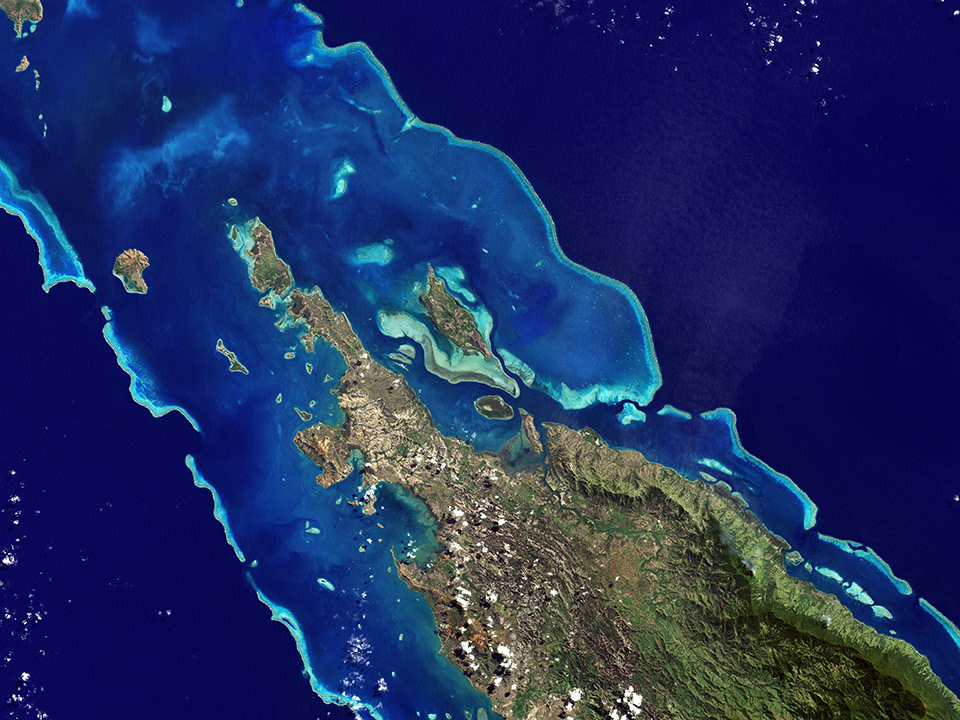What is a lagoon?
A lagoon is a body of water separated from larger bodies of water by a natural barrier.

This NASA satellite image shows the lagoons and reefs of New Caledonia. This French-governed archipelago contains the world’s third-largest coral reef structure.
Lagoons are separated from larger bodies of water by sandbars, barrier reefs, coral reefs, or other natural barriers. The word "lagoon" derives from the Italian word laguna, which means "pond" or "lake."
Although lagoons are well defined geographically, the word “lagoon” is sometimes used as a name for a larger region that contains one or more lagoons. For example, Laguna Madre on the Texas Gulf Coast is actually made up of smaller bays and lagoons, while Laguna Beach in Southern California is actually a beach and not a lagoon at all.
There are two types of lagoons: atoll and coastal. Atoll lagoons form when an island completely subsides beneath the water, leaving a ring of coral that continues to grow upwards. At the center of the ring is a body of water that is often deep. The combination of coral growth and water creates a lagoon. It may take as long as 300,000 years for an atoll formation to occur.
Coastal lagoons form along gently sloping coasts. They are generally shallower than atoll lagoons and tend to be separated from the ocean by an island, reef, or sand bank. Most of the time, coastal lagoons are connected to the ocean by an inlet.
Sea level rise, the amount of existing sediment, and tidal range all contribute to the formation of coastal lagoons. Younger and more dynamic than atoll lagoons, coastal lagoons may have shorter “lifespans” due to their exposed locations on the shore.
Get Social
More Information
Did you know?
Lagoons are more than just scenic waterbodies; they are often important habitats for aquatic life. In the Commonwealth of the Northern Marianas, typhoons, bleaching, and human-caused threats have impacted Saipan Lagoon. Local resource managers requested an updated benthic habitat map to help them better understand these habitat changes and to inform monitoring and management decisions. In response, NOAA created an updated map for areas shallower than 30 meters inside the lagoon.

Last updated: 06/16/24
Author: NOAA
How to cite this article